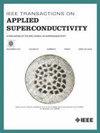Predicting Voltage of NI REBCO Pancake Coils to Detect Normal-State Transition Using Convolutional Neural Network
IF 1.7
3区 物理与天体物理
Q3 ENGINEERING, ELECTRICAL & ELECTRONIC
引用次数: 0
Abstract
No-insulation (NI) rare-earth barium copper oxide (REBCO) pancake coils are a leading candidate for high-field generation due to their high performances under high fields. However, the need for active quench protection has begun arising because the high energy density makes it difficult to protect REBCO magnets only by adopting the NI techniques. One of the challenging parts of the protection is the quench detection difficult for the NI REBCO pancake coil. The slow normal-zone propagation speed and the low coil resistance lead to delayed quench detection and frequent protection failures of the NI REBCO coils system. To address the problem in the local-normal-zone detection of NI REBCO pancake coils, we have been focusing on a deep-learning technology to detect any anomalous voltage rise of the REBCO pancake coils. The deep learning has a high potential for the quench detection of the REBCO pancake coil since it can flexibly learn the characteristics of objects that people cannot recognize. In this paper, we build a CNN-based (convolutional-neural-network-based) voltage predictor to detect steep voltage rises during the normal-state transition of NI REBCO pancake coils. The CNN model is trained with the numerous quench data generated with the well-established partial equivalent element method (PEEC) simulation coupled with thermal finite element analysis. The test results of the trained CNN are presented.求助全文
约1分钟内获得全文
求助全文
来源期刊

IEEE Transactions on Applied Superconductivity
工程技术-工程:电子与电气
CiteScore
3.50
自引率
33.30%
发文量
650
审稿时长
2.3 months
期刊介绍:
IEEE Transactions on Applied Superconductivity (TAS) contains articles on the applications of superconductivity and other relevant technology. Electronic applications include analog and digital circuits employing thin films and active devices such as Josephson junctions. Large scale applications include magnets for power applications such as motors and generators, for magnetic resonance, for accelerators, and cable applications such as power transmission.
 求助内容:
求助内容: 应助结果提醒方式:
应助结果提醒方式:


